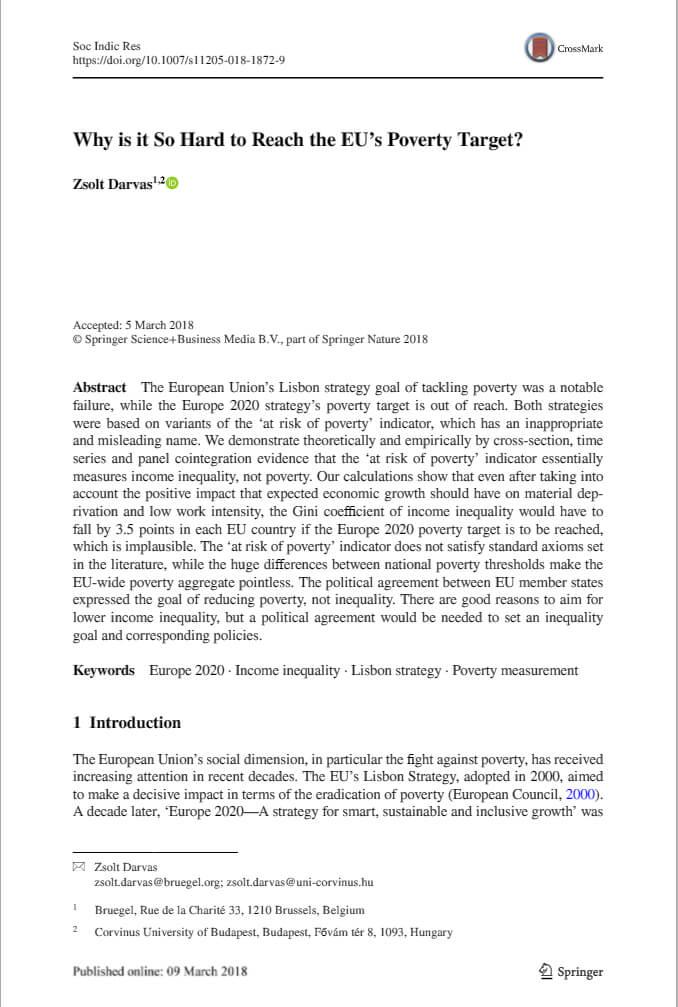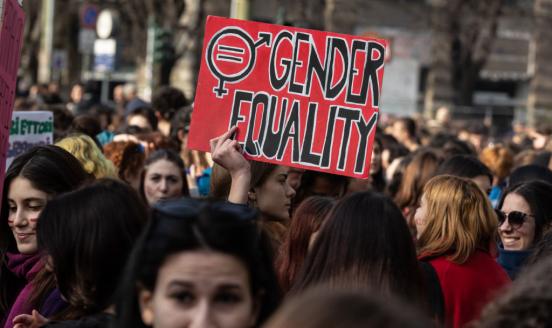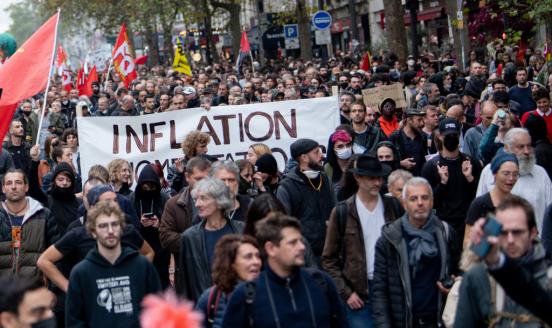Why is it so hard to reach the EU’s poverty target?
Why is it so hard to reach the Europe 2020 ‘poverty’ target? What does the poverty indicator actually measure? Why was the Lisbon strategy goal of tac
The European Union’s Lisbon strategy goal of tackling poverty was a notable failure, while the Europe 2020 strategy’s poverty target is out of reach. Both strategies were based on variants of the ‘at risk of poverty’ indicator, which has an inappropriate and misleading name. We demonstrate theoretically and empirically by cross-section, time series and panel cointegration evidence that the ‘at risk of poverty’ indicator essentially measures income inequality, not poverty.
Our calculations show that even after taking into account the positive impact that expected economic growth should have on material deprivation and low work intensity, the Gini coefficient of income inequality would have to fall by 3.5 points in each EU country if the Europe 2020 poverty target is to be reached, which is implausible.
The ‘at risk of poverty’ indicator does not satisfy standard axioms set in the literature, while the huge differences between national poverty thresholds make the EU-wide poverty aggregate pointless.
The political agreement between EU member states expressed the goal of reducing poverty, not inequality. There are good reasons to aim for lower income inequality, but a political agreement would be needed to set an inequality goal and corresponding policies.




